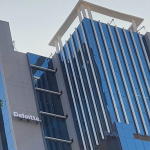
work life balance can reduce cardiovascular risk harvard study
A new study by a team of researchers from the Harvard T.H. Chan School of Public Health and Pennsylvania State University has revealed that work-life balance can reduce cardiovascular risk.
A workplace experiment was conducted with 1,528 employees with the aim of improving their work-life balance. The research revealed that good workplace flexibility could reduce the risk of cardiovascular disease in some employees.
Two companies, an IT company with 555 employees and a long-term care facility with 973 employees participated in the workplace experiment.
Work-life balance can reduce cardiovascular risk
As part of the research, the researchers measured blood pressure, body mass index, glycated hemoglobin, smoking habits, HDL cholesterol and total cholesterol for all participating employees. After 12 months, the scientists again conducted these tests. At the end of the experiment, the researchers found that work-life balance reduced the risk of cardiovascular disease in certain employees.
Lisa Berkman, the study’s co-lead author, said, “The study illustrates how working conditions are important social determinants of health.”
Keep Reading
How to achieve work-life balance?
Achieving a work-life balance every day can be difficult for employees. However, some office productivity hacks can help employees to achieve work-life balance.
Do not work at the office during lunch break. Do not put off lunch when the day gets seemingly too busy. Eat and relax your mind during lunch break because it will improve your concentration. This can help employees to achieve work-life balance.
Take short breaks between your 9 to 5 job because it will increase your productivity at work. You can take a small break after every 2-3 hours. Do not work in one place at the office for 9 hours straight.
Spending too much time on social media can affect your mental health. It can also hamper your productivity at work. Interacting constantly with your friends on the internet often leads to tech fatigue, which is not a good sign for employees.









